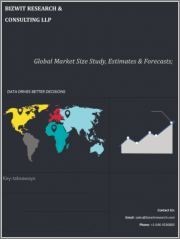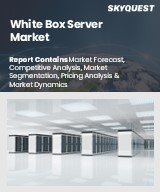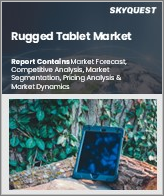
|
시장보고서
상품코드
1381643
세계의 Linux 운영체제 시장 규모 조사 및 예측 : 유통별, 최종 용도별, 지역별 분석(2023-2030년)Global Linux Operating System Market Size Study & Forecast, by Distribution (Virtual Machines, Servers, Desktops), by End-use (Commercial/Enterprise, Individual), and Regional Analysis, 2023-2030 |
||||||
세계 Linux 운영체제 시장은 2022년 약 155억 2,000만 달러로 평가되며, 예측 기간인 2023-2030년에는 20.1% 이상의 건전한 성장률로 성장할 것으로 예상됩니다.
Linux 운영체제는 데스크톱 컴퓨터, 휴대폰, 태블릿, 슈퍼컴퓨터, 게임기 등 다양한 기기에 설치되는 무료 오픈소스 운영체제로, 오픈소스 소프트웨어로 누구나 무료로 사용할 수 있습니다. 윈도우 OS나 맥 OS와 같이 라이선스 비용을 요구하는 특허 운영체제에 비해 누구나 무료로 사용할 수 있습니다. 데스크톱 PC용 리눅스에는 여러 가지 버전과 배포판이 있습니다. 따라서 리눅스 개발에 기여하는 개발자 커뮤니티도 크고 활발합니다. 세계 시장의 성장은 스마트폰과 모바일 기기의 리눅스 보급, 오픈소스 소프트웨어에 대한 수요 증가, 윈도우 라이선스 비용 상승 등의 요인으로 인해 확대되고 있습니다.
클라우드 컴퓨팅의 채택이 증가하고 있는 것도 세계 시장 성장의 또 다른 요인으로 작용하고 있습니다. 클라우드 컴퓨팅은 전 세계적으로 높은 인기를 얻고 있으며, 그 결과 클라우드 컴퓨팅 플랫폼에 대한 리눅스 수요가 증가하고 있는데, 이는 리눅스가 안정적이고 안전한 운영체제로서 확장성이 뛰어나기 때문입니다. 예를 들어, IEEE ComSoc에 따르면 2021년 클라우드 컴퓨팅에 대한 전 세계 공공 지출은 3,323억 달러로 2020년의 2,700억 달러에서 23.1% 가까이 증가했습니다. 또한, OS 기반 하이브리드 클라우드 플랫폼의 사용 증가, 보안 강화, 서버의 안정성 및 밀도 향상으로 인해 시장이 확대되고 있습니다. 클라우드용 Linux 운영체제는 주로 호스팅 사용자를 위해 개발되었습니다. 이 클라우드 기반 운영체제를 통해 사용자는 서로 다른 LVE(Lightweight Virtualized Environment, 경량 가상화 환경)로 구분된 상태를 유지할 수 있으며, LVE를 통해 사용자는 서버 리소스의 범주, 제한, 보안 할당 등을 설정할 수 있습니다. 제한, 안전한 할당 등을 설정할 수 있습니다. 클라우드 기반 운영체제는 악의적인 프로그램이나 온라인 공격으로부터 사용자의 데이터베이스와 웹사이트를 보호할 수 있습니다. 또한 사물인터넷(IoT)과 임베디드 시스템의 급속한 확산, 기술 발전의 증가는 향후 몇 년 동안 다양한 유리한 기회를 제공할 것입니다. 그러나 윈도우와의 치열한 경쟁과 리눅스의 제한된 채택은 2023년에서 2030년까지의 예측 기간 동안 시장 성장을 저해하고 있습니다.
세계 Linux 운영체제 시장 조사에서 고려된 주요 지역은 아시아태평양, 북미, 유럽, 라틴아메리카, 중동 및 아프리카 등입니다. 북미는 클라우드 및 데이터센터 구축의 증가와 기업의 클라우드 투자 증가로 인해 2022년 시장을 주도했습니다. 또한 미국, 캐나다 등의 국가에서 사물인터넷(IoT) 및 클라우드 컴퓨팅의 사용이 증가하면서 이 지역의 시장 성장을 주도하고 있습니다. 한편, 아시아태평양은 예측 기간 동안 가장 높은 CAGR로 성장할 것으로 예상됩니다.
클라우드 컴퓨팅과 가상화 추세, 사물인터넷, 리눅스 기반 운영체제를 탑재한 안드로이드 스마트폰과 같은 첨단 기술의 채택이 증가하면서 이 지역 전체 시장 수요를 크게 촉진하고 있습니다.
이 조사의 목적은 최근 몇 년 동안 다양한 부문과 국가의 시장 규모를 파악하고 향후 몇 년 동안 시장 규모를 예측하는 것입니다. 이 보고서는 조사 대상 국가의 산업의 질적, 양적 측면을 포함하도록 설계되었습니다.
또한 시장의 미래 성장을 규정하는 촉진요인과 과제와 같은 중요한 측면에 대한 자세한 정보도 제공합니다. 또한, 주요 기업의 경쟁 상황과 제품 제공에 대한 상세한 분석과 함께 이해관계자들이 투자할 수 있는 미시적 시장에서의 잠재적 기회도 포함합니다.
목차
제1장 주요 요약
제2장 Linux 운영체제 세계 시장 정의와 범위
- 조사 목적
- 시장 정의와 범위
- 업계의 진화
- 조사 범위
- 조사 대상 연도
- 통화 환산율
제3장 Linux 운영체제 세계 시장 역학
- Linux 운영체제 시장의 영향 분석(2020-2030년)
- 시장 성장 촉진요인
- 클라우드 컴퓨팅 채용 증가
- 오픈 소스 소프트웨어에 대한 수요 증가
- 시장 과제
- Windows와의 치열한 경쟁
- Linux 채용이 한정적
- 시장 기회
- 사물인터넷(IoT) 및 임베디드 시스템의 급속한 보급
- 기술 진보 증가
- 시장 성장 촉진요인
제4장 Linux 운영체제 세계 시장 산업 분석
- Porter's 5 Force 모델
- 공급 기업의 교섭력
- 구매자의 교섭력
- 신규 참여업체의 위협
- 대체품의 위협
- 경쟁 기업 간의 경쟁 관계
- Porter's 5 Force 영향 분석
- PEST 분석
- 정치
- 경제
- 사회
- 기술
- 환경
- 법률
- 주요 투자 기회
- 주요 성공 전략
- COVID-19 영향 분석
- 파괴적 동향
- 업계 전문가의 관점
- 애널리스트의 결론과 제안
제5장 Linux 운영체제 세계 시장 : 유통별
- 시장 현황
- Linux 운영체제 세계 시장 : 유통별, 실적 - 잠재성 분석
- Linux 운영체제 세계 시장 : 유통별, 추정·예측, 2020-2030년
- Linux 운영체제 세계 시장, 하위 부문별 분석
- 가상 머신
- 서버
- 데스크톱
제6장 Linux 운영체제 세계 시장 : 최종 용도별
- 시장 현황
- Linux 운영체제 세계 시장 : 최종 용도별, 실적 - 잠재성 분석
- Linux 운영체제 세계 시장 : 최종 용도별, 추정·예측, 2020-2030년
- Linux 운영체제 시장, 하위 부문 분석
- 상용/기업
- 개인용
제7장 Linux 운영체제 세계 시장 : 지역별 분석
- 주요 국가
- 주요 신흥 국가
- Linux 운영체제 시장 : 지역별 시장 현황
- 북미
- 미국
- 유통, 추정·예측, 2020-2030년
- 최종 용도, 추정·예측, 2020-2030년
- 캐나다
- 미국
- 유럽의 Linux 운영체제 시장 현황
- 영국
- 독일
- 프랑스
- 스페인
- 이탈리아
- 기타 유럽
- 아시아태평양의 Linux 운영체제 시장 현황
- 중국
- 인도
- 일본
- 호주
- 한국
- 기타 아시아태평양
- 라틴아메리카의 Linux 운영체제 시장 현황
- 브라질
- 멕시코
- 중동 및 아프리카
- 사우디아라비아
- 남아프리카공화국
- 기타 중동 및 아프리카
제8장 경쟁 정보
- 주요 기업 SWOT 분석
- 주요 시장 전략
- 기업 개요
- Amazon Web Services, Inc.(미국)
- 주요 정보
- 개요
- 재무(데이터 가용성에 따라 다름)
- 제품 개요
- Canonical Ltd.(영국)
- International Business Machines Corporation(미국)
- Oracle Corporation(미국)
- ClearCenter(미국)
- Linux Mint(아일랜드)
- Elementary, Inc.(미국)
- Slackware Linux Project(미국)
- MontaVista Software, LLC(미국)
- SUSE Group(독일)
- Amazon Web Services, Inc.(미국)
제9장 조사 과정
- 조사 과정
- 데이터 광업
- 분석
- 시장 추정
- 검증
- 출판
- 조사 속성
- 조사 가정
Global Linux Operating System Market is valued at approximately USD 15.52 billion in 2022 and is anticipated to grow with a healthy growth rate of more than 20.1% over the forecast period 2023-2030. The Linux operating system is a free and open-source operating system that is installed on a variety of devices, including desktop computers, mobile phones, tablets, supercomputers, and gaming consoles. Linux is open-source software that is available to everyone for free compared to patent operating systems that demand a license charge, such as Windows OS and Mac OS. There are several different versions or distributions of Linux available for desktop PCs. Accordingly, this has led to a large and active community of developers who contribute to the development of Linux. The global market growth is expanding because of factors such as the growing penetration of Linux in smartphone and mobile devices, increasing demand for open-source software, coupled with the rising cost of Windows licenses.
In addition, the increasing adoption of cloud computing is acting as a catalyzing factor for market growth across the globe. Cloud computing is gaining high popularity globally, which significantly results in the high demand for Linux for cloud computing platforms because it is a reliable and secure operating system, and it is also very scalable. For instance, according to the IEEE ComSoc, in 2021, the global public spending on cloud computing has reached USD 332.3 billion with a rise of nearly 23.1 % from USD 270 billion in 2020. Also, the market has grown as a result of an increase in the use of OS-based hybrid cloud platforms with greater security, improved server reliability, and density. The Linux operating system for the cloud was primarily created for hosting users. Users are helped to remain distinct in a different Lightweight Virtualized Environment (LVE) via this cloud-based operating system. It allows users to set up categories, limitations, and secure allocations of server resources. A cloud-based operating system helps protect users' databases and websites against malicious programmes and online assaults. Furthermore, the rapid proliferation of the Internet of Things (IoT) and embedded systems, as well as the increase in advancement of technology present various lucrative opportunities over the forecast years. However, the intense competition from windows and limited adoption of linux are hampering the market growth throughout the forecast period of 2023-2030.
The key regions considered for the Global Linux Operating System Market study include Asia Pacific, North America, Europe, Latin America, and Middle East & Africa. North America dominated the market in 2022 owing to the rise in cloud and data center deployment, along with the growing cloud investments by the companies. Additionally, the regional market growth is primarily driven by the rising use of the Internet of Things (IoT) and cloud computing in countries such as the United States and Canada. Whereas, Asia Pacific is expected to grow at the highest CAGR over the forecast years.
The growing trend of cloud computing and virtualization, as well as the rising adoption of advanced technologies such as the internet of things and android smartphones with Linux-based operating systems are significantly propelling the market demand across the region.
Major market players included in this report are:
- Amazon Web Services, Inc. (U.S.)
- Canonical Ltd. (U.K.)
- International Business Machines Corporation (U.S.)
- Oracle Corporation (U.S.)
- ClearCenter (U.S.)
- Linux Mint (Ireland)
- Elementary, Inc. (U.S.)
- Slackware Linux Project (U.S.)
- MontaVista Software, LLC (U.S.)
- SUSE Group (Germany)
Recent Developments in the Market:
- In February 2022, Slackware Linux Project launched Slackware version 15.0 for desktops. A new user interface, updated programmes help in improving the stability and performance of this version.
- In December 2022, Siemens AG announced the launch of the customizable Linux Sokol Flex OS for RISC-V architecture. Through integrated security, the new technology assists clients in identifying and monitoring risks.
Global Linux Operating System Market Report Scope:
- Historical Data - 2020 - 2021
- Base Year for Estimation - 2022
- Forecast period - 2023-2030
- Report Coverage - Revenue forecast, Company Ranking, Competitive Landscape, Growth factors, and Trends
- Segments Covered - Distribution, End-use, Region
- Regional Scope - North America; Europe; Asia Pacific; Latin America; Middle East & Africa
- Customization Scope - Free report customization (equivalent up to 8 analyst's working hours) with purchase. Addition or alteration to country, regional & segment scope*
The objective of the study is to define market sizes of different segments & countries in recent years and to forecast the values to the coming years. The report is designed to incorporate both qualitative and quantitative aspects of the industry within countries involved in the study.
The report also caters detailed information about the crucial aspects such as driving factors & challenges which will define the future growth of the market. Additionally, it also incorporates potential opportunities in micro markets for stakeholders to invest along with the detailed analysis of competitive landscape and product offerings of key players. The detailed segments and sub-segment of the market are explained below:
By Distribution:
- Virtual Machines
- Servers
- Desktops
By End-use:
- Commercial/Enterprise
- Individual
By Region:
- North America
- U.S.
- Canada
- Europe
- UK
- Germany
- France
- Spain
- Italy
- ROE
- Asia Pacific
- China
- India
- Japan
- Australia
- South Korea
- RoAPAC
- Latin America
- Brazil
- Mexico
- Middle East & Africa
- Saudi Arabia
- South Africa
- Rest of Middle East & Africa
Table of Contents
Chapter 1. Executive Summary
- 1.1. Market Snapshot
- 1.2. Global & Segmental Market Estimates & Forecasts, 2020-2030 (USD Billion)
- 1.2.1. Linux Operating System Market, by Region, 2020-2030 (USD Billion)
- 1.2.2. Linux Operating System Market, by Distribution, 2020-2030 (USD Billion)
- 1.2.3. Linux Operating System Market, by End-use, 2020-2030 (USD Billion)
- 1.3. Key Trends
- 1.4. Estimation Methodology
- 1.5. Research Assumption
Chapter 2. Global Linux Operating System Market Definition and Scope
- 2.1. Objective of the Study
- 2.2. Market Definition & Scope
- 2.2.1. Industry Evolution
- 2.2.2. Scope of the Study
- 2.3. Years Considered for the Study
- 2.4. Currency Conversion Rates
Chapter 3. Global Linux Operating System Market Dynamics
- 3.1. Linux Operating System Market Impact Analysis (2020-2030)
- 3.1.1. Market Drivers
- 3.1.1.1. Increasing adoption of cloud computing
- 3.1.1.2. Rising demand for open-source software
- 3.1.2. Market Challenges
- 3.1.2.1. Intense competition from windows
- 3.1.2.2. Limited adoption of Linux
- 3.1.3. Market Opportunities
- 3.1.3.1. Rapid proliferation of the Internet of Things (IoT) and embedded systems, as well as the
- 3.1.3.2. Increase in advancement of technology
- 3.1.1. Market Drivers
Chapter 4. Global Linux Operating System Market Industry Analysis
- 4.1. Porter's 5 Force Model
- 4.1.1. Bargaining Power of Suppliers
- 4.1.2. Bargaining Power of Buyers
- 4.1.3. Threat of New Entrants
- 4.1.4. Threat of Substitutes
- 4.1.5. Competitive Rivalry
- 4.2. Porter's 5 Force Impact Analysis
- 4.3. PEST Analysis
- 4.3.1. Political
- 4.3.2. Economical
- 4.3.3. Social
- 4.3.4. Technological
- 4.3.5. Environmental
- 4.3.6. Legal
- 4.4. Top investment opportunity
- 4.5. Top winning strategies
- 4.6. COVID-19 Impact Analysis
- 4.7. Disruptive Trends
- 4.8. Industry Expert Perspective
- 4.9. Analyst Recommendation & Conclusion
Chapter 5. Global Linux Operating System Market, by Distribution
- 5.1. Market Snapshot
- 5.2. Global Linux Operating System Market by Distribution, Performance - Potential Analysis
- 5.3. Global Linux Operating System Market Estimates & Forecasts by Distribution 2020-2030 (USD Billion)
- 5.4. Linux Operating System Market, Sub Segment Analysis
- 5.4.1. Virtual Machines
- 5.4.2. Servers
- 5.4.3. Desktops
Chapter 6. Global Linux Operating System Market, by End-use
- 6.1. Market Snapshot
- 6.2. Global Linux Operating System Market by End-use, Performance - Potential Analysis
- 6.3. Global Linux Operating System Market Estimates & Forecasts by End-use 2020-2030 (USD Billion)
- 6.4. Linux Operating System Market, Sub Segment Analysis
- 6.4.1. Commercial/Enterprise
- 6.4.2. Individual
Chapter 7. Global Linux Operating System Market, Regional Analysis
- 7.1. Top Leading Countries
- 7.2. Top Emerging Countries
- 7.3. Linux Operating System Market, Regional Market Snapshot
- 7.4. North America Linux Operating System Market
- 7.4.1. U.S. Linux Operating System Market
- 7.4.1.1. Distribution breakdown estimates & forecasts, 2020-2030
- 7.4.1.2. End-use breakdown estimates & forecasts, 2020-2030
- 7.4.2. Canada Linux Operating System Market
- 7.4.1. U.S. Linux Operating System Market
- 7.5. Europe Linux Operating System Market Snapshot
- 7.5.1. U.K. Linux Operating System Market
- 7.5.2. Germany Linux Operating System Market
- 7.5.3. France Linux Operating System Market
- 7.5.4. Spain Linux Operating System Market
- 7.5.5. Italy Linux Operating System Market
- 7.5.6. Rest of Europe Linux Operating System Market
- 7.6. Asia-Pacific Linux Operating System Market Snapshot
- 7.6.1. China Linux Operating System Market
- 7.6.2. India Linux Operating System Market
- 7.6.3. Japan Linux Operating System Market
- 7.6.4. Australia Linux Operating System Market
- 7.6.5. South Korea Linux Operating System Market
- 7.6.6. Rest of Asia Pacific Linux Operating System Market
- 7.7. Latin America Linux Operating System Market Snapshot
- 7.7.1. Brazil Linux Operating System Market
- 7.7.2. Mexico Linux Operating System Market
- 7.8. Middle East & Africa Linux Operating System Market
- 7.8.1. Saudi Arabia Linux Operating System Market
- 7.8.2. South Africa Linux Operating System Market
- 7.8.3. Rest of Middle East & Africa Linux Operating System Market
Chapter 8. Competitive Intelligence
- 8.1. Key Company SWOT Analysis
- 8.1.1. Company 1
- 8.1.2. Company 2
- 8.1.3. Company 3
- 8.2. Top Market Strategies
- 8.3. Company Profiles
- 8.3.1. Amazon Web Services, Inc. (U.S.)
- 8.3.1.1. Key Information
- 8.3.1.2. Overview
- 8.3.1.3. Financial (Subject to Data Availability)
- 8.3.1.4. Product Summary
- 8.3.1.5. Recent Developments
- 8.3.2. Canonical Ltd. (U.K.)
- 8.3.3. International Business Machines Corporation (U.S.)
- 8.3.4. Oracle Corporation (U.S.)
- 8.3.5. ClearCenter (U.S.)
- 8.3.6. Linux Mint (Ireland)
- 8.3.7. Elementary, Inc. (U.S.)
- 8.3.8. Slackware Linux Project (U.S.)
- 8.3.9. MontaVista Software, LLC (U.S.)
- 8.3.10. SUSE Group (Germany)
- 8.3.1. Amazon Web Services, Inc. (U.S.)
Chapter 9. Research Process
- 9.1. Research Process
- 9.1.1. Data Mining
- 9.1.2. Analysis
- 9.1.3. Market Estimation
- 9.1.4. Validation
- 9.1.5. Publishing
- 9.2. Research Attributes
- 9.3. Research Assumption



















